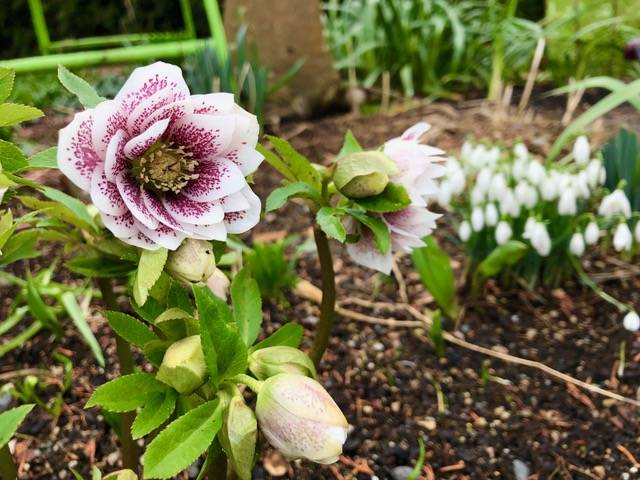By Steve Smith
Last week I pontificated on the ramifications of the recent winter storm. We discussed frozen roots on container plants, broken limbs on trees and shrubs, disfigured evergreens and frozen buds. Here are a few more thoughts on what to look for in assessing the extent of winter damage in your garden.
After writing last week’s column, I toured my neighborhood to see what the situation was for lost spring flowers. I am happy to report that things look pretty good. •Pieris, or Japanese Andromeda, is a tried and true broadleaf evergreen shrub that has been used extensively in the Northwest for decades to anchor foundations and provide early spring color in gardens. The lacy flower buds form in the fall and are present on the shrub all winter – therefore subject to the perils of Mother Nature. They will emerge and be in full bloom as early as late February, but usually it is early March. As an added bonus, they are a good attractant for pollinators and should be planted near fruit trees and berries to help lure bees. Over the years breeders have done a marvelous job of developing new varieties that are more compact and have more intensely colored flowers. Garden centers should have them available for sale this time of year. Alas, the take home message is that Pieris buds look healthy and should be in full bloom by the end of the month.
•Rhododendron buds are looking good, too. The way you tell is to squeeze them and see if they are firm and green in color. My neighbor’s 15-foot-tall “Cynthia” rhodie is always a good litmus test, and it is a happy camper right now. Early blooming rhodies, like the PJM series and Christmas Cheer, all have viable buds but that doesn’t mean that a nasty frost during bloom won’t turn them brown and ruin their performance. That is always a risk with early blooming shrubs and perennials.
•Much to my amazement, my winter daphne is doing just fine, despite being almost in full bloom when all this snow and subfreezing weather happened. Plants have the uncanny ability to modify their internal fluids so they don’t freeze and spill their guts. That’s a good thing for us in the Northwest where our winters are so unpredictable.
•Lastly, the fate of my hellebores, snow drops, and budded narcissus has finally been revealed. The snow drops look like they were never buried, but the daffodils and hellebores – while still blooming perfectly – have comically twisted stems, as if they’re a bit tipsy. One can only wonder what was really going on under all that snow for weeks on end. From the looks of the new mole mounds in my lawn, I would say it must have been one heck of a party.
So over all, I am predicting that this spring will not be a disaster but rather a typical year where everything unfolds as usual, or at the most a few weeks behind schedule. That is amazing considering how far ahead of schedule we were back in January. Such is the variability of a Northwest winter.
Steve Smith is owner of Sunnyside Nursery in Marysville and can be reached at info@sunnysidenursery.net. Sunnyside will offer four free classes next weekend – “Conifer Kingdom” March 2 at 10 a.m., “Roses for Everyone” March 2 at noon, “New & Exciting for 2019” March 3 at 11 a.m. and “Roses for Everyone” March 3 at 1 p.m.


